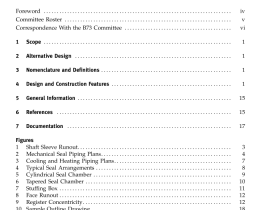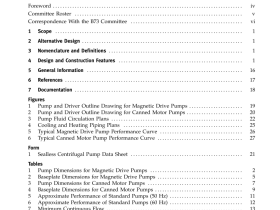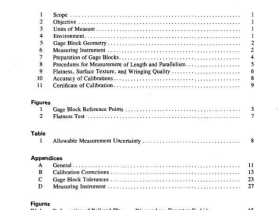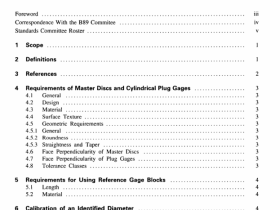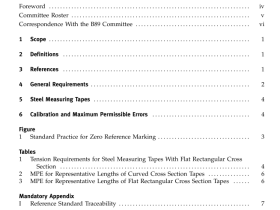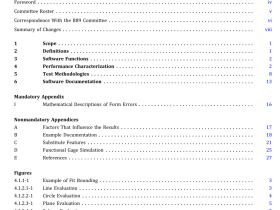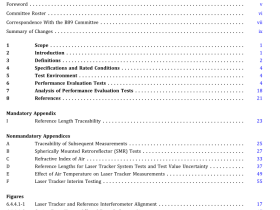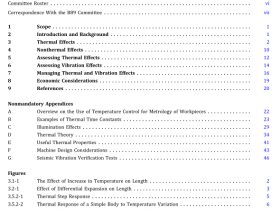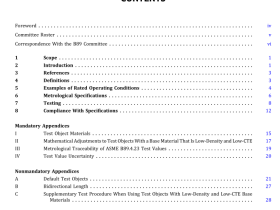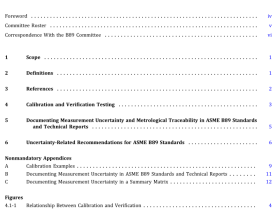ASME HST-5 pdf download
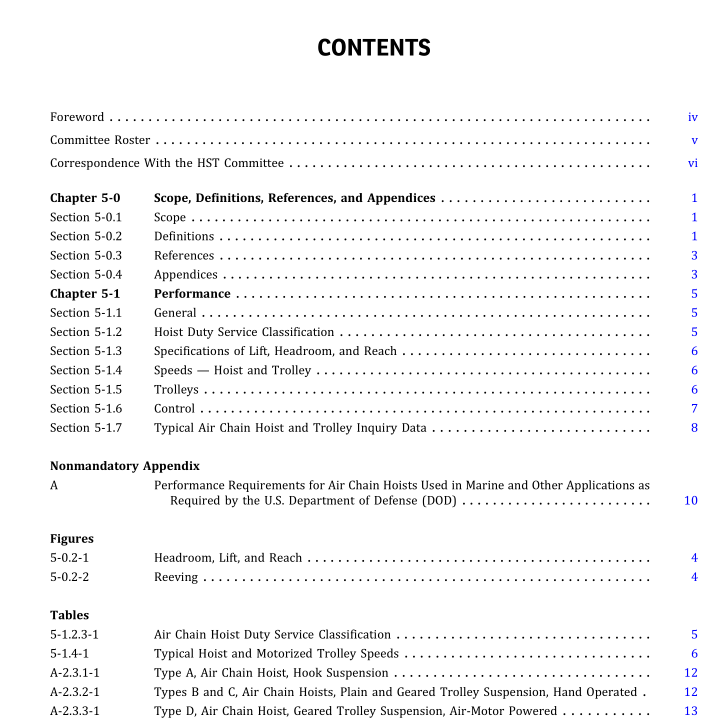
ASME HST-5 pdf download Performance Standard for Air Chain Hoists
SECTION 5-0.1: SCOPE
(a) This Standard establishes performance requirements for air-powered chain hoists for vertical lifting service in.volving materialhandling offreely suspended(unguided)loads usingload chain ofthe roler or welded linktypes with oneof the following types of suspension:
(1) lug
(2) hook or clevis
(3) trolley(b) This Standard is applicable to hoists manufactured after the date on which this Standard is issued. It is not applicable to
(1) damaged or malfunctioning hoists
(2) hoists that have been misused or abused
(3) hoists that have been altered without authorization of the manufacturer or a qualified person
(4) hoists used for lifting or supporting people, or(5) hoists used for the purpose of drawing both the load and the hoist up or down the hoist’s own load chain(sThe requirements ofthis Standard shall be applied together with the requirements ofASME B30.16.Please also refer toASME B30.16 for requirements pertaining to marking, construction, and installation; inspection, testing, and maintenance; and operation.
SECTION 5-0.2: DEFINITIONS
abnormal operating conditions: environmental conditions that are unfavorable, harmful, or detrimental to the operatiorf a hoist. such as excessivelv high or low temperatures. exnosure to weather. corrosive fumes. dust-aden or moistureladen atmospheres, and hazardous locations.
ambient temperature: the temperature of the atmosphere surrounding the hoistbeam: an overhead standard structural or specially fabricated shape on which the trolley operates.brake: a device, other than a motor, used for retarding or stopping motion by means of friction or power.brake, holding: a friction brake for a hoist that is automatically applied and prevents motion when the air supply isinterrupted.
brake, mechanical load: an automatic type of friction brake used for controlling loads in a lowering direction. Thisunidirectional device requires torque from the motor to lower a load but does not impose additional load on themotor when lifting a load. This may also be used as a holding brake if designed as such by the manufacturer.braking, control: a method ofcontrolling speed by removing energy from the moving body or by imparting energy in theopposite direction.
braking, dynamic: a method of controlling speed by using the motor as a compressorchain, hand: the chain provided to control movement of a hand chain-operated trolleychain, load: the load-bearing chain in the hoist.
chain, roller:a series ofalternatelyassembled rollerlinks and pin links in which pins articulate inside the bushings and therollers are free to turn on the bushings. Pins and bushings are press-fit in their respective link plates.chain, welded link: a chain consisting of a series of interwoven links formed and welded.
NOTE: Load chain properties do not conform to those shown in ASME B30.9.control: a device or group of devices that serves to govern in some predetermined manner the power delivered to theapparatus to which it is connected.
